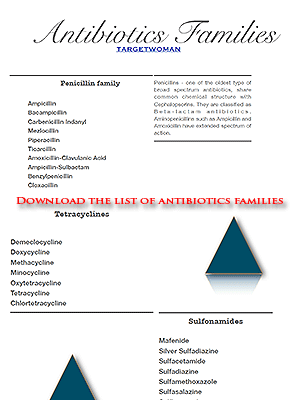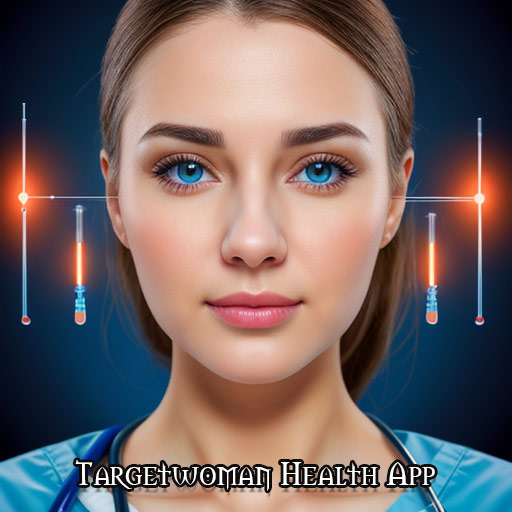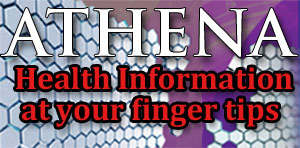Botulism
Botulism leads to muscle paralysis. It is caused by Clostridium botulinum bacteria that are found in improperly canned foods. The symptoms of botulism are abdominal cramps, vomiting, nausea and difficulty in breathing and speaking. As treatment, Botulinus antitoxin is given.
Botox
Botox is the brand name for Botulinum Toxin Type A. It is a protein complex produced by the bacterium 'Clostridium botulinum' - the same bacterium that causes the form of food poisoning known as botulism. Botox, however, is a purified form of this bacterium. Dermatologists used it to treat muscle disorders such as uncontrolled blinking. Botox was approved by the FDA in 1989 to treat eye muscle disorders such as blepharospasm, uncontrollable blinking, and strabismus, - crossed eyes. In 2000, it was approved to treat cervical dystonia (a disorder that causes severe neck and shoulder contractions). As an unusual side effect of the eye disorder treatment, doctors observed that Botox softened the frown lines between the eyebrows.
When Botox is injected through the skin into the muscle with a needle, it keeps the muscle from contracting. Because of this temporary paralysis, wrinkles become less obvious. A trained doctor will inject small amounts of Botox into a small part of the muscle to render it immobile. The horizontal wrinkles of the forehead, the vertical 'frown' wrinkles of the brow (between the two eyebrows) and crow's feet beside the eyes are the areas best suited to Botox cosmetic.
Small doses of botox are injected directly into the muscles of the face. Prior to injecting botox, the doctor will first determine the area of injection based on the person's ability to move certain muscles in the brow area. An improvement in frown lines will be noticed within 3- 7 days and could last up to 4 months. However results may vary. Although there is no chance of contracting botulism from Botox injections, there are some risks associated with the procedure. If too much toxin is injected or if it is injected into the wrong facial area, a person can end up with droopy eyelid muscles that could last for weeks. This particular complication was observed in clinical trials. Other botox side effects are:
- Headache
- Flu like symptoms
- Temporary eyelid drop
- Nausea
- Squint/Double vision
- Twitching of eye
- Facial pain
- Redness at injection site
- Muscle weakness
Botox procedures are not recommended for pregnant women or those suffering from neurological disorders. Possible allergies must also be looked into. A qualified dermatologist is the best person to administer botox treatments. This minimizes the potential for misuse. Botox treatment is resorted to by those who do not wish to face the risk of surgery and prefer being treated for a few minutes every three to four months.
List of general Antibiotics
Antibiotics are primarily used to treat bacterial infections. They may have secondary uses - treatment of the Syndrome of Inappropriate Antidiuretic Hormone (SIADH) secretion with Declomycin. Some antibiotics are also used to prevent infection (antibiotic prophylaxis) before any surgery or in the case of weakened immune systems. There was a study which indicated that about 300 million prescriptions for antibiotics are issued every year in the US alone and the wide spread use or abuse of the antibiotics is a serious issue. For example, an antibiotic can seriously deplete the normal intestinal micro flora which can result in vaginal yeast infection in susceptible women. Indiscriminate use of antibiotics can bring about increased incidences of Streptococcal disease in children apart from enhanced drug resistance.
Antibiotic medications can be categorized as either bactericidal or bacteriostatic. Bactericidal antibiotics, like penicillins and cephalosporins, directly kill bacteria. On the other hand, bacteriostatic antibiotics, such as erythromycin, inhibit bacterial growth and multiplication, thereby allowing the immune system to manage and resolve the infection.
Prophylactic antibiotics drugs are given to individuals who are at high risk of infection but are not currently infected. Sometimes, Antibiotics are administered before surgery, to patients with weakened immune systems, or to prevent infections in certain medical conditions. This is in contrast to Therapeutic Antibiotic Treatment where an bacterial infection has been diagnosed which requires specific antibiotic drug to combat the infection.
Antibiotics Classification: Antibiotics are classified under many categories. Commonly they are grouped based on chemical structure and Antibiotics within the same class exhibit similar kind of effectiveness, allergic potential and toxicity. The exhaustive list below also contains drug allergy or other reactions possible for susceptible individuals as appropriate under each class.
Other types of classification:
Bacterial Spectrum: Broad Spectrum Antibiotics are capable of targeting many types of bacteria while narrow spectrum antibiotics target specifically a single class of bacteria. It is generally preferable to use a specific antibiotic for the specific class of bacteria.
Type of Activity: Bactericidal drugs are intended to kill bacteria while bacteriostatic drugs are intended to inhibit the growth of bacteria.
Broad Spectrum Antibiotics: According to a Swiss Study, this class of Antibiotics which act against Gram+ and Gram- bacteria is prone to misuse. Broad Spectrum Antibiotics - specifically the antipseudomonal agents (i.e. cefepime, ceftazidime, ciprofloxacin, imipenem, meropenem, piperacil lin/tazobactam) plus trovafloxacin were found to be misused.
The following list shows the generic names of common antibiotics prescribed and available under various trade names in the US. We have broadly classified them under the common 'family' names.
Broad Spectrum Penicillins / Amoxicillin : Penicillin Family Antibiotics List
Penicillins - one of the oldest type of broad spectrum antibiotics, share common chemical structure with Cephalopsorins. They are classified as Beta-lactam antibiotics. Aminopenicillins such as Ampicillin and Amoxicillin have extended spectrum of action. Extended Spectrum Penicillins are effective against a broad range of bacteria including Pseudomonas Aeruginosa which affect patients with weakened immune systems.
The Penicillin family of antibiotics includes various types of antibiotics that share a similar chemical structure and mechanism of action. Here is a list of some well-known antibiotics within the Penicillin family:
- Penicillin G (Benzylpenicillin) : One of the earliest and most commonly used antibiotics, effective against many bacterial infections.
- Penicillin V (Phenoxymethylpenicillin) : Often used to treat streptococcal infections, especially those involving the throat.
- Amoxicillin : A widely prescribed broad-spectrum antibiotic used to treat a range of bacterial infections.
- Ampicillin : Similar to amoxicillin but with a broader spectrum of activity, effective against both Gram-positive and some Gram-negative bacteria.
- Oxacillin : A penicillinase-resistant penicillin used to treat infections caused by penicillin-resistant Staphylococcus aureus (MRSA).
- Methicillin : Another penicillinase-resistant penicillin used against penicillin-resistant Staphylococcus aureus, though it's not commonly used due to side effects.
- Piperacillin : An extended-spectrum penicillin often used in hospitals for severe infections.
- Ticarcillin : Another extended-spectrum penicillin used for treating various infections, especially those involving Pseudomonas aeruginosa.
- Carbenicillin : Effective against Gram-negative bacteria, especially Pseudomonas species.
- Augmentin (Amoxicillin/Clavulanic Acid) : A combination antibiotic that includes amoxicillin and clavulanic acid, used to treat a broader range of infections.
Dosage for Augmentin: For Adults and Children:
The usual dose of Augmentin is 250 mg/125 mg to 875 mg/125 mg twice a day, depending on the severity of the infection. The tablet strength is expressed as the amount of amoxicillin/clavulanic acid in milligrams.
For Children (Dosage can vary based on weight):
The pediatric dose is typically calculated based on the child's weight and is expressed as milligrams of amoxicillin/clavulanic acid per kilogram (mg/kg) of body weight. The dose is usually divided into two or three equal doses spread throughout the day.
- Unasyn (Ampicillin/Sulbactam) : Similar to Augmentin, this combination includes ampicillin and sulbactam, extending its activity against beta-lactamase-producing bacteria.
Allergic reactions are common with Penicillins for susceptible individuals. Cephalosporins can cause seizures or affect the blood clotting time for susceptible patients.
- Ampicillin
- Bacampicillin
- Carbenicillin Indanyl
- Mezlocillin
- Piperacillin
- Ticarcillin
Penicillins and Beta Lactamase Inhibitors
- Amoxicillin-Clavulanic Acid
- Ampicillin-Sulbactam
- Benzylpenicillin
- Cloxacillin
- Dicloxacillin
- Methicillin
- Oxacillin
- Penicillin G
- Penicillin V
- Piperacillin Tazobactam
- Ticarcillin Clavulanic Acid
- Nafcillin
- Procaine Penicillin - Injectable form of penicillin that contains an anesthetic to reduce the pain of
the injection. Procaine Penicillin dosage is usually between 600000 to 1 million units per day Intramuscular (IM) for about 10 days for most Upper respiratory tract infection and other simpler bacterial infections. P Penicillin must never be administered intravenously as it can result in anaphylactic shock.
Cephalosporins
Cephalosporins, one of the largest classes of Antibiotics are used to treat a long list of bacterial infections from around the year 1950. The latest in this class, Ceftaroline is a new fifth generation Cephalosporin - a broad spectrum Antibiotics that shows promise against Gram + bacteria including Methicillin Resistant Staphylococcus Aureus (MRSA),Vancomycin Intermediate S.Aureus (VISA), Vancomycin Resistant S.Aureus (VRSA)and Heteroresistant VISA (hVISA).
- Cephalosporin I Generation Antibiotics
- Cefadroxil
- Cefazolin
- Cephalexin
- Cephalothin
- Cephapirin
- Cephradine
Cephalosporin II Generation Antibiotics
- Cefaclor
- Cefamandol
- Cefonicid
- Cefotetan
- Cefoxitin
- Cefprozil
- Ceftmetazole
- Cefuroxime
- Loracarbef
Cephalosporin III Generation Antibiotics
- Cefdinir
- Ceftibuten
- Cefoperazone
- Cefixime
- Cefotaxime
- Cefpodoxime proxetil
- Ceftazidime
- Ceftizoxime
- Ceftriaxone
Cephalosporin IV Generation Antibiotics
- Cefepime
- Cefluprenam
- Cefozopran
- Cefpirome
- Cefquinome
Fourth generation Cephalosporin antibiotics are effective in the treatment of Encephalitis and Meningitis as they cross the blood-brain barrier.
Cephalosporin V Generation Antibioticsor New Generation Cephalosporins - NGCs
- Ceftolozane
- Ceftaroline
- Ceftobiprole
The New Generation Cephalosporins show considerable efficacy against a host of bacteria - from MRSA to respiratory pathogens like Streptococcus Pneumoniae, Haemophilus Influenzae and Moraxella Catarrhalis.
β lactam antibacterial resistance: These fifth generation Cephalosporins inhibit the cell wall synthesis of Penicillin Binding Proteins (PBPs). For example, Ceftaroline's anti MRSA efficacy stems from its high affinity for the MRSA associated (Penicillin Binding Proteins)PBP2a. It may have affinity greater than 256 times over other β lactams.
Ceftaroline is effective against the following:
Gram Positive Bacteria which cause skin infections:
Methicillin Resistant Staphylococcus Aureus (MRSA) and resistant isolates
Streptococcus Pyogenes
Streptococcus Agalactiae
Gram Positive Bacteria which cause Community Acquired Bacterial Pneumonia (CABP):
Streptococcus Pneumoniae
Staphylococcus aureus(methicillin susceptible isolates)
Gram Negative Bacteria:
Klebsiella Pneumoniae
Klebsiella Oxytoca
Escherichia Coli
Haemophilus Iinfluenzae
Escherichia Coli
Macrolides and Lincosamines
Macrolide Antibiotics have macrocyclic lactone chemical structure. Erythromycin and the newer antibiotics belonging to this broad spectrum class - Azithromycin and Clarithromycin are widely used for their higher level of lung penetration. Erythromycin may rarely result in Myasthenia gravis while Azithromycin may rarely result in Angioedema (Patches of swelling of the skin, mucus membranes and internal organs), Anaphylaxis (hypersensitive reaction due to contact through allergens) or other allergic reactions.
- Azithromycin
- Clarithromycin
- Clindamycin
- Dirithromycin
- Erythromycin
- Lincomycin
- Troleandomycin
Quinolones and Fluoroquinolones
Fluoroquinolones are synthetically manufactured broad spectrum Antibiotics. Lomefloxacin is reported to cause increased photosensitivity and in some cases may result in convulsion.
- Cinoxacin
- Ciprofloxacin
- Enoxacin
- Gatifloxacin
- Grepafloxacin
- Levofloxacin
- Lomefloxacin
- Moxifloxacin
- Nalidixic acid
- Norfloxacin
- Ofloxacin
- Sparfloxacin
- Trovafloxacin
- Oxolinic acid
- Gemifloxacin
- Perfloxacin
Beta lactam Antibiotics: Carbepenems
Imipenem-Cilastatin
Meropenem
Monobactams
Aztreonam


Aminoglycosides : These antibiotics are specifically used to target aerobic, Gram-negative bacteria. Generally useful against Pseudomonos, Acinetobacter and Enterobacter amongst others. Streptomycin is effective to control tuberculosis causing mycobacteria. Antibiotic treatment with Aminoglycosides often involves the use of another antibiotics for overall better synergetic effect.
- Amikacin
- Gentamicin
- Kanamycin
- Neomycin
- Netilmicin
- Streptomycin
- Capreomycin Sulfate
- Tobramycin
- Paromomycin
Details on Specific Antibiotic Therapy
Gentamicin: Gentamicin is the antibiotic of choice for the treatment of some kind of blood infections caused by gram negative bacilli like the following:
- Citrobacter freundii
- Acinetobacter species
- Enterobacter species
- Escherichia coli
- Klebsiella pneumoniae
- Proteus mirabilis
- Providencia stuartii
- Pseudomonas Aeruginosa
- Serratia species
Gentamicin is often used along with beta-lactam antibiotics for better efficiency.
Conventional Dosage: It should be noted that a typical dosage of Gentamicin is usually given 2 to 3 times a day by IV (intravenous) or IM (intramuscular) injections to achieve peak blood concentration between 5.0 μg/mL and 12.0 μg/ml. The dosage mentioned here depends on the type of infection and on other factors like the patient's renal function. Gentamicin is sometimes given at a higher dose than the suggested common dosage - 5-7mg/kg of body weight once per day - termed as pulse dosing for patients with good tolerance and good renal function. Risk of excessive dosage in the case of Gentamicin is Ototoxicity (damage to the inner ear) and Nephrotoxicity (damage to kidneys).
Glycopeptides
Teicoplanin
Vancomycin
- Demeclocycline
- Doxycycline
- Methacycline
- Minocycline
- Oxytetracycline
- Tetracycline
- Chlortetracycline
Tetracyclines are not normally prescribed for children under the age of 8 due to the permanent tooth discoloration these drugs cause.
- Mafenide
- Silver Sulfadiazine
- Sulfacetamide
- Sulfadiazine
- Sulfamethoxazole
- Sulfasalazine
- Sulfisoxazole
- Trimethoprim-Sulfamethoxazole
- Sulfamethizole
Rifampin
Rifabutin
Rifampin also known as Rifampicin (Rifadin)
Rifapentine
Oxazolidonones
Linezolid
Streptogramins
Quinopristin Dalfopristin
Other Antibiotics

Bacitracin: Bacitracin belongs to a class of antibiotics known as polypeptides. Bacitracin is effective against a variety of bacteria, particularly Gram-positive bacteria.
Mechanism of Action:
Bacitracin works by interfering with the bacteria's ability to form cell walls. Specifically, it inhibits the formation of peptidoglycan, an essential component of bacterial cell walls. Without a properly formed cell wall, bacteria are unable to maintain their structural integrity and eventually die.
Uses:
Skin Infections : Bacitracin is commonly used as a topical antibiotic ointment or cream to treat minor skin infections such as cuts, scrapes, and minor burns. It helps prevent bacterial growth in the affected area, allowing the body to heal more effectively.
Eye Infections : Bacitracin ointment is also used in the treatment of certain eye infections, such as bacterial conjunctivitis (pink eye). It is applied to the inner eyelid to help fight the infection.
Other Infections : Bacitracin can be used in other types of infections, such as those affecting the respiratory tract or urinary tract, but it is less commonly used for these purposes compared to other antibiotics.
Administration:
Topical : Bacitracin is most commonly available as a topical ointment or cream. It should be applied directly to the affected area of the skin. Before application, the area should be cleaned and dried thoroughly.
Ophthalmic : Bacitracin ointment for the eyes should be applied as directed by a healthcare professional. It is usually applied to the inner eyelid several times a day, depending on the severity of the infection.
Side Effects :
Bacitracin is generally considered safe when used topically or as directed. However, like any medication, it can cause side effects in some individuals. Common side effects include:
Skin irritation, redness, or itching at the application site
Allergic reactions (rare but possible)
Contact dermatitis (inflammation of the skin due to an allergic reaction or irritation)
Precautions and Considerations :
Bacitracin is for external use only and should not be ingested.
It should not be used on deep cuts, puncture wounds, animal bites, or serious burns without consulting a healthcare professional.
Individuals with known allergies to bacitracin or any component of the medication should avoid its use.
Pregnant or breastfeeding women should consult with a healthcare professional before using bacitracin.
Chloramphenicol : Chloramphenicol is another strong broad spectrum antibiotic.
Chloramphenicol may be the antibiotic of choice for the following conditions :
Bacterial meningitis: Chloramphenicol can be used to treat bacterial meningitis, which is an infection of the membranes that surround the brain and spinal cord.
Typhoid fever: Chloramphenicol can be used to treat typhoid fever, which is a bacterial infection that can cause high fever, headache, and gastrointestinal symptoms.
Rickettsial infections: Chloramphenicol can be used to treat rickettsial infections, which are bacterial infections that are spread by ticks, lice, fleas, and other insects.
Bacterial conjunctivitis: Chloramphenicol can be used to treat bacterial conjunctivitis, which is an infection of the eye that can cause redness, discharge, and irritation.
The recommended dosage of Chloramphenicol will depend on the specific condition being treated, the age and weight of the patient and other individual factors.
Dosage:
For bacterial meningitis in children: The recommended dosage is 50-100 mg/kg/day, given in 4 divided doses.
For typhoid fever: The recommended dosage is 50-75 mg/kg/day, given in 4 divided doses for 14 days.
For bacterial conjunctivitis: The recommended dosage is 1-2 drops of a 0.5% ophthalmic solution in the affected eye(s) every 2-4 hours.
For acne: The recommended dosage is 50-100 mg orally, 2-4 times daily, for several weeks.
Caution: Some of the common side effects of Chloramphenicol include - Nausea, vomiting, Diarrhea, Headache, Dizziness, Rash, Blood disorders, such as anemia or low white blood cell count. In rare cases, Chloramphenicol can also cause serious side effects, such as aplastic anemia, which is a condition where the bone marrow stops producing new blood cells.
Topical Antibiotics:
Many Antibiotics are available for external application on the skin which include:
Erythromycin
Clindamycin
Tetracycline
Meclocycline
Sodium sulfacetamide
Topical medications that act as Comedolytics as well as antibiotics:
Benzoyl peroxide
Azelaic acid
Benzoyl peroxide
Recommended Dosage : Antibiotics dosage is based on many factors:
- Target Pathogen
- Choice of Drug
- Area of Infection
- Severity of infection
- Pertinent Patient conditions such as age, renal function
- Route of administration
Many antibiotics can be administered parenterally - either through Intravenous (IV) or Intra muscular (IM) injections.
You may find some typical usage instructions, dosage, contra indications and side effects - if any for some of the antibiotics listed above in these pages.
Antibiotics for Anaerobic infections
Anaerobes - the kind of bacteria which can not grow in the presence of oxygen, can infect deep wounds and internal organs - sometimes resulting in gangrene, botulism, tetanus and almost all dental infections.
Some common Anaerobic infections
- Pneumonia, Empyema, Bronchiectasis
- Appendicitis, Peritonitis
- Endometritis, Pelvic abscesses
- Necrotizing Fascitis (destructive infection of the deep skin), Bacteremia (presence of Anaerobic bacteria in the blood)
Many antibiotics do not inhibit/control Anaerobes. But Chloramphenicol, Imipenem, Metronidazole, Clindamycin and Cefoxitin are effective against these bacteria.
New Antibiotics in pipeline: Pseudouridimycin (PUM) is a promising new Antibiotic which inhibits bacterial RNA polymerase (RNAP). What is more, PUM in the research shows its ability to act against drug resistant bacterial pathogens.
Ornidazole is a nitroimidazole derivative and is an antimicrobial agent used in the treatment of various infections caused by anaerobic bacteria and protozoa. It is a broad-spectrum antibiotic that exhibits activity against a wide range of anaerobic bacteria, including Bacteroides, Clostridium, and Fusobacterium species, as well as some protozoa such as Trichomonas vaginalis and Entamoeba histolytica.
Dosage:
Ornidazole is available in the form of oral tablets, capsules, and injections for intravenous use. The dosage and duration of treatment depend on the severity of the infection, the patient's age, and the patient's medical history. The usual adult dose for the treatment of anaerobic infections is 500-1000 mg, twice daily for 5-10 days. For the treatment of amoebic infections, the recommended dose is 1500 mg as a single daily dose for three days.
Caveats:
Like all antibiotics, Ornidazole has some caveats and should be used with caution in certain situations. Some of the caveats include:
- Hypersensitivity: Ornidazole should not be used in patients who are allergic to nitroimidazole compounds.
- Pregnancy and lactation: Ornidazole should be used with caution in pregnant and lactating women. It is not recommended for use during the first trimester of pregnancy unless the benefits outweigh the risks.
- Neurological disorders: Ornidazole may cause neurological side effects such as dizziness, headache, and seizures. It should be used with caution in patients with a history of neurological disorders.
- Blood disorders: Ornidazole may cause blood disorders such as leukopenia, thrombocytopenia, and agranulocytosis. It should be used with caution in patients with a history of blood disorders.
- Alcohol consumption: Ornidazole, as it belongs to the nitroimidazole group, should not be used in combination with alcohol as it may cause a disulfiram-like reaction.
At TargetWoman, every page you read is crafted by a team of highly qualified experts — not generated by artificial intelligence. We believe in thoughtful, human-written content backed by research, insight, and empathy. Our use of AI is limited to semantic understanding, helping us better connect ideas, organize knowledge, and enhance user experience — never to replace the human voice that defines our work. Our Natural Language Navigational engine knows that words form only the outer superficial layer. The real meaning of the words are deduced from the collection of words, their proximity to each other and the context.
Diseases, Symptoms, Tests and Treatment arranged in alphabetical order:

A B C D E F G H I J K L M N O P Q R S T U V W X Y Z
Bibliography / Reference
Collection of Pages - Last revised Date: December 14, 2025



